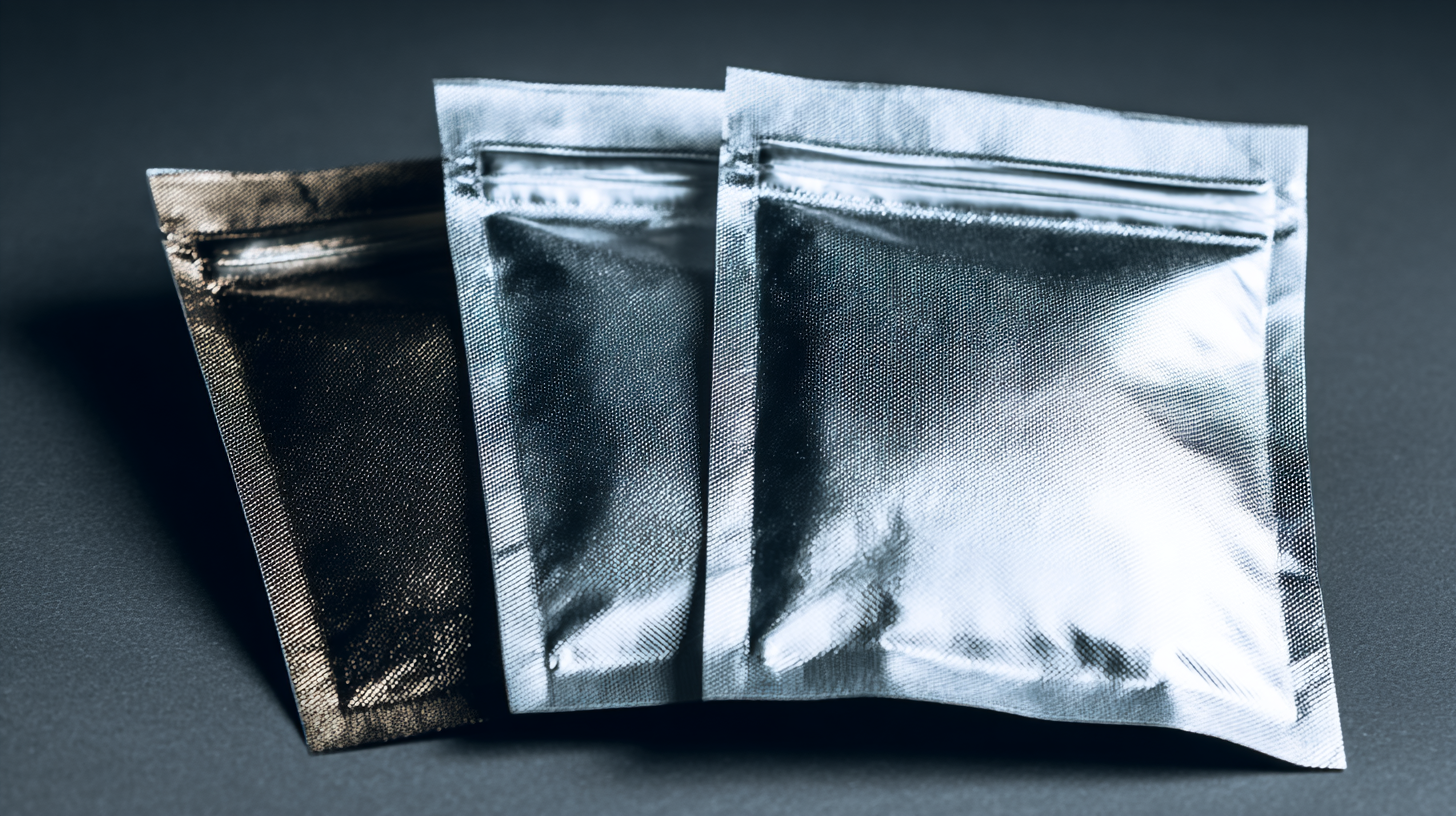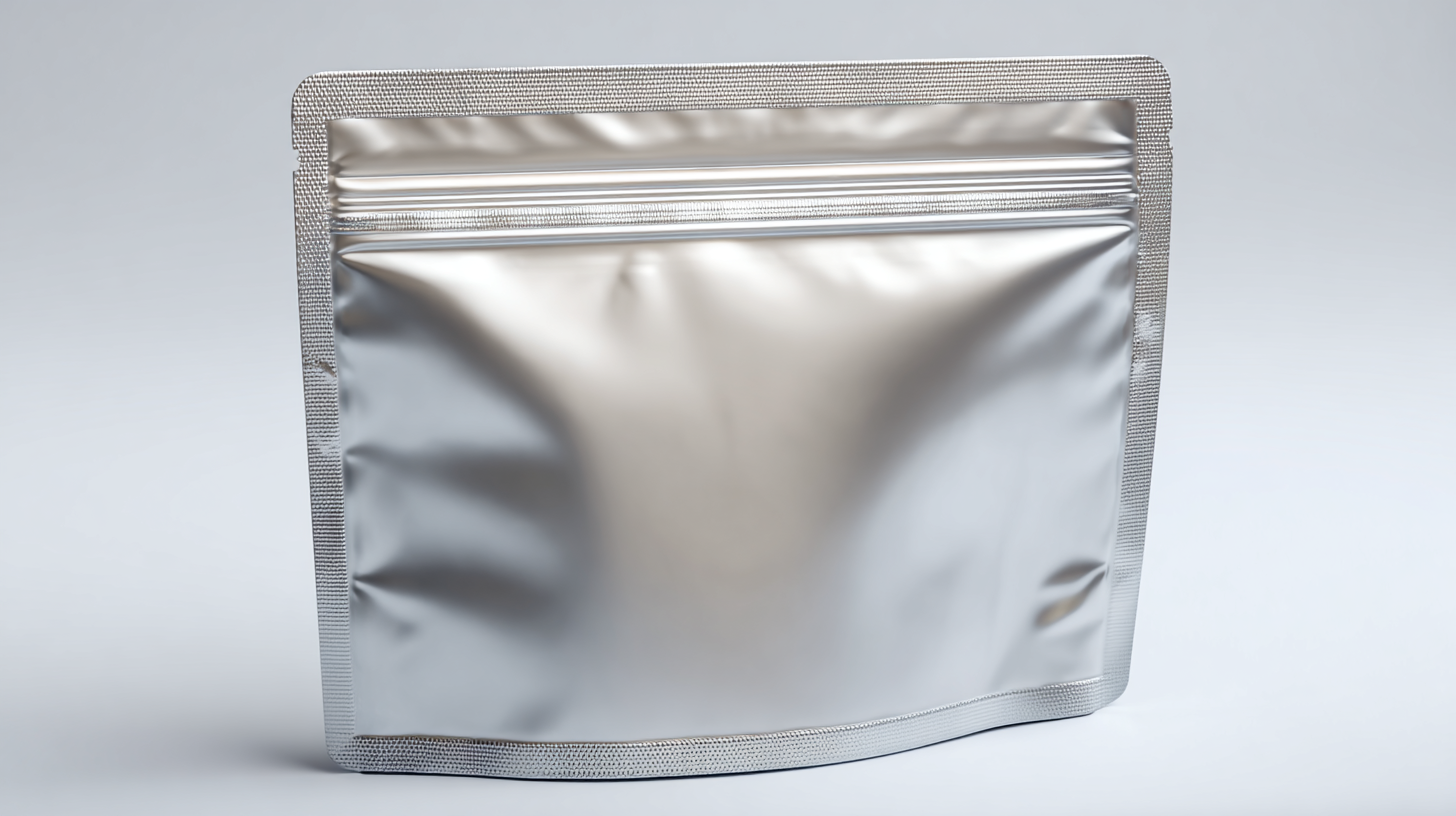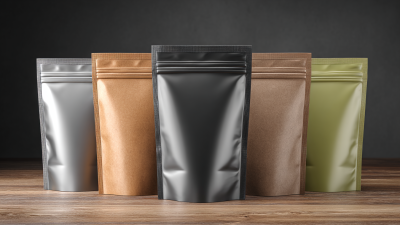Unlocking the Versatility of Aluminium Foil Pouches: Sustainable Packaging Solutions Explained
The increasing demand for sustainable packaging solutions has led to the growing popularity of aluminium foil pouches in various industries, including food and personal care. According to a report by MarketsandMarkets, the global flexible packaging market is expected to reach USD 300 billion by 2025, with aluminium foil pouches playing a significant role due to their superior barrier properties and recyclability. These versatile packages not only enhance product shelf life but also contribute to waste reduction. Research from Smithers Pira indicates that 49% of consumers prioritize eco-friendly packaging, reinforcing the need for brands to adopt aluminium foil pouches that align with sustainability trends. As businesses strive to meet consumer preferences and environmental regulations, aluminium foil pouches emerge as a key player in the evolution of packaging solutions, underscoring their relevance and adaptability in today's market.

Key Features of Aluminium Foil Pouches: A Closer Look at Their Advantages in Sustainable Packaging
Aluminium foil pouches have emerged as a frontrunner in sustainable packaging solutions due to their unique advantages. According to a report by Smithers Pira, the global flexible packaging market is expected to reach $300 billion by 2025, with sustainable packaging expected to increase its share significantly. Aluminium foil pouches provide an exceptional barrier against moisture, light, and oxygen, which not only prolongs the shelf life of products but also reduces food waste. Packaging plays a crucial role in maintaining food integrity, with a staggering 1.3 billion tons of food lost or wasted each year globally, highlighting the importance of effective packaging solutions.

Moreover, aluminium foil is infinitely recyclable, making it an environmentally friendly option. The Aluminum Association reports that recycling aluminium saves about 95% of the energy required to produce new aluminium. Additionally, in countries with established recycling programs, like Germany, aluminium's recycling rate exceeds 90%, showcasing its potential for a circular economy. As consumer awareness continues to rise, brands are increasingly turning to aluminium foil pouches as a sustainable alternative that meets both environmental standards and consumer preferences, effectively bridging the gap between functionality and sustainability in the packaging industry.
Global Market Trends for Aluminium Foil Pouches: Growth Statistics and Future Projections
The demand for aluminium foil pouches has surged in recent years, driven by their superior barrier properties and sustainability features. According to a recent market analysis by Grand View Research, the global aluminium foil pouch market is projected to reach USD 6.97 billion by 2028, growing at a CAGR of 4.6% from 2021 to 2028. This growth trend is largely fueled by the increasing consumer preference for lightweight and recyclable packaging solutions that also extend shelf life, thereby reducing food waste.
Moreover, the food and beverage sector remains the largest end-user of aluminium foil pouches, accounting for over 60% of the market share in 2020. The versatility of these pouches allows them to cater to diverse products, ranging from snacks and ready-to-eat meals to beverages and pet food. As sustainability becomes a critical factor in consumer purchasing decisions, many manufacturers are investing in eco-friendly materials and processes, reinforcing the shift towards aluminium foil pouches. Reports indicate that brands focusing on innovative, sustainable packaging can enhance their market position and consumer appeal, positioning them well for future growth in this evolving landscape.
Unlocking the Versatility of Aluminium Foil Pouches: Sustainable Packaging Solutions Explained
| Year | Market Size (USD Billion) | Growth Rate (%) | Key Application Segments | Sustainability Index |
|---|---|---|---|---|
| 2021 | 2.84 | 5.2 | Food, Pharmaceutical, Cosmetic | 78 |
| 2022 | 3.01 | 6.0 | Food, Pharmaceutical, Cosmetic | 80 |
| 2023 | 3.06 | 5.5 | Food, Pharmaceutical, Cosmetic | 82 |
| 2024 | 3.22 | 5.2 | Food, Pharmaceutical, Cosmetic | 84 |
| 2025 | 3.38 | 5.0 | Food, Pharmaceutical, Cosmetic | 86 |
Environmental Impact of Aluminium Foil Pouches: Recycling Rates and Sustainability Practices
Aluminium foil pouches have emerged as a sustainable packaging solution, particularly noted for their high recyclability and minimal environmental footprint. According to the Aluminium Association, aluminium is one of the most recycled materials globally, boasting a recycling rate of over 75%. This impressive figure showcases the material’s potential for a circular economy, where used foil can be repurposed into new products with significantly lower energy consumption compared to producing new aluminium from ore.
In addition to high recycling rates, the environmental impact of aluminium foil pouches is mitigated by their durability and lightweight nature. A study by the European Aluminium Foil Association reveals that using aluminium foil can lead to a reduction in carbon emissions by up to 90% when producing pouches compared to traditional materials. Furthermore, advancements in sustainability practices have led manufacturers to adopt eco-friendly production methods, such as using renewable energy sources and implementing closed-loop systems for waste reduction. With these practices in place, aluminium foil pouches not only provide excellent barrier properties for food and product preservation but also align with the growing demand for environmentally responsible packaging solutions.
Comparative Analysis: Aluminium Foil Pouches vs. Traditional Packaging Materials
Aluminium foil pouches have gained significant traction in the packaging industry due to their unique properties, offering distinct advantages over traditional packaging materials. They provide an excellent barrier against moisture, light, and oxygen, which helps preserve the shelf life and quality of food products. In contrast, traditional packaging materials such as plastic and paper often fall short in these areas, making them less effective for long-term food storage. This heightened protection ensures that products maintain their freshness, flavor, and nutritional value, addressing consumer demands for high-quality packaging solutions.

Moreover, the versatility of aluminium foil pouches extends beyond food packaging; they are increasingly utilized in pharmaceuticals and personal care items, showcasing their multi-functional capabilities. Unlike non-biodegradable plastics that pose environmental concerns, aluminium foil is recyclable and can be part of a sustainable packaging strategy. As the market shifts towards eco-friendly solutions, aluminium foil pouches emerge as a promising alternative that not only meets functionality needs but also aligns with sustainability goals, establishing a clear competitive edge over traditional packaging materials.
Innovations in Aluminium Foil Pouch Manufacturing: Eco-Friendly Techniques and Technologies
The manufacturing of aluminium foil pouches has seen significant innovations that prioritize eco-friendliness, aligning with the global push towards sustainable packaging solutions. One of the notable advancements is the integration of renewable energy sources in the production process. This shift not only reduces the carbon footprint but also promotes energy efficiency throughout the lifecycle of the packaging. Manufacturers are increasingly employing solar and wind energy to power their operations, resulting in a cleaner production method that minimizes environmental impact.
In addition to energy innovations, the development of biodegradable and recyclable materials is also revolutionizing aluminium foil pouch manufacturing. Techniques such as using bio-based plastics and implementing advanced barrier coatings enhance the durability of pouches while allowing for eventual decomposition or recyclability. These eco-friendly materials ensure that aluminium foil pouches remain a versatile option for various applications, from food preservation to industrial uses, contributing to a circular economy. By adopting these sustainable practices, manufacturers are not only meeting consumer demands for environmentally conscious products but also setting new industry standards for responsible packaging solutions.


